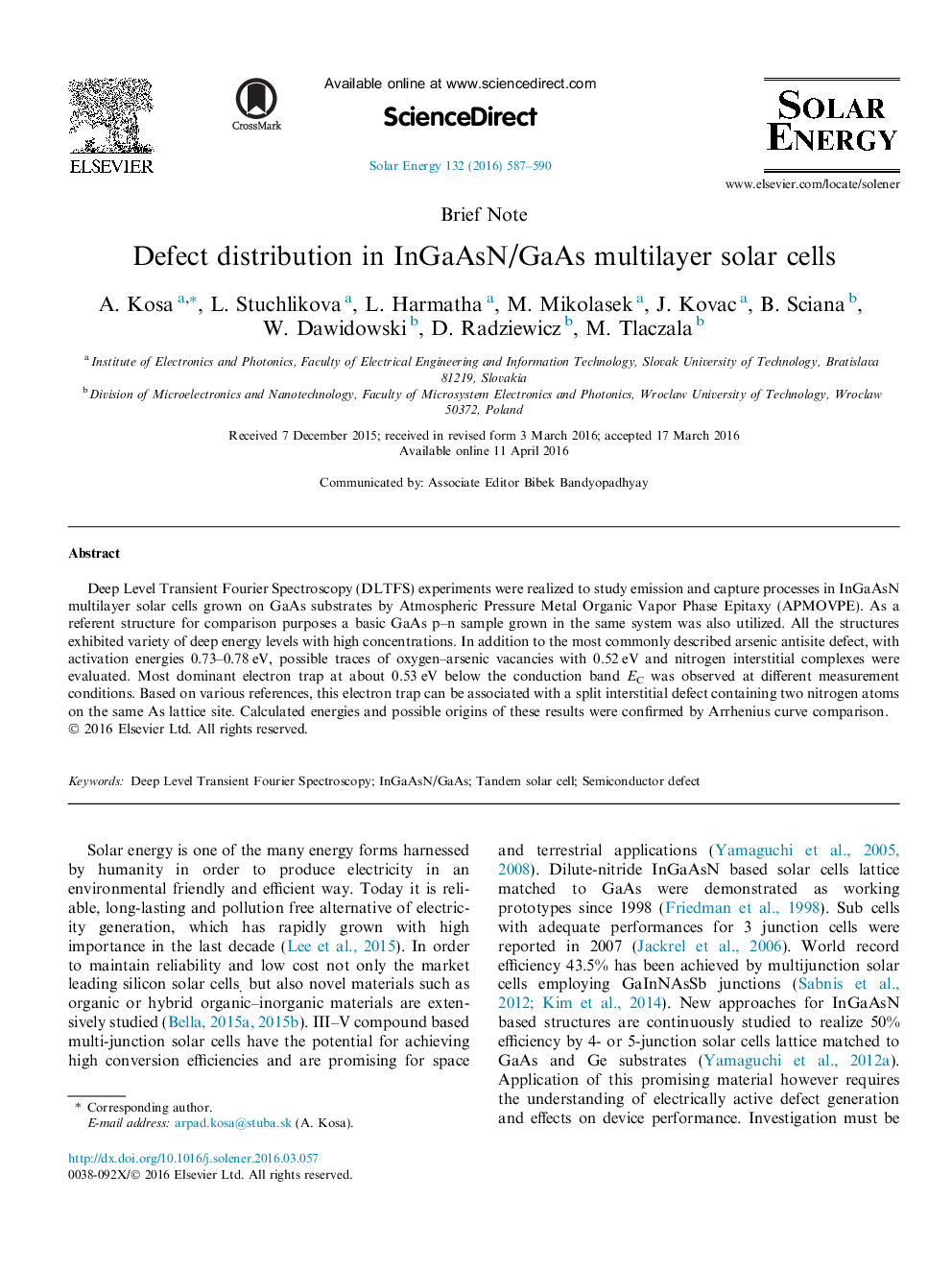| Article ID | Journal | Published Year | Pages | File Type |
|---|---|---|---|---|
| 1549431 | Solar Energy | 2016 | 4 Pages |
Abstract
Deep Level Transient Fourier Spectroscopy (DLTFS) experiments were realized to study emission and capture processes in InGaAsN multilayer solar cells grown on GaAs substrates by Atmospheric Pressure Metal Organic Vapor Phase Epitaxy (APMOVPE). As a referent structure for comparison purposes a basic GaAs p-n sample grown in the same system was also utilized. All the structures exhibited variety of deep energy levels with high concentrations. In addition to the most commonly described arsenic antisite defect, with activation energies 0.73-0.78Â eV, possible traces of oxygen-arsenic vacancies with 0.52Â eV and nitrogen interstitial complexes were evaluated. Most dominant electron trap at about 0.53Â eV below the conduction band EC was observed at different measurement conditions. Based on various references, this electron trap can be associated with a split interstitial defect containing two nitrogen atoms on the same As lattice site. Calculated energies and possible origins of these results were confirmed by Arrhenius curve comparison.
Keywords
Related Topics
Physical Sciences and Engineering
Energy
Renewable Energy, Sustainability and the Environment
Authors
A. Kosa, L. Stuchlikova, L. Harmatha, M. Mikolasek, J. Kovac, B. Sciana, W. Dawidowski, D. Radziewicz, M. Tlaczala,
